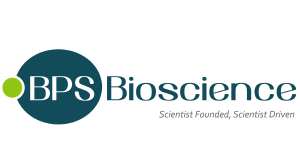STEAP1 HEK293 Cell Line
STEAP1 HEK293 Cell Line
SKU
BPS82749
Packaging Unit
2 Vials
Manufacturer
BPS Bioscience
Availability:
loading...
Price is loading...
Products from BPS Bioscience require a minimum order value above 400€
Application: Screen therapeutic antibodies and ADCs targeting STEAP1
Co-culture assays with STEAP1-directed CAR-T cells.
Background: STEAP1 (six transmembrane epithelial antigen of the prostate 1), also called STEAP, belongs to the STEAP family of metalloproteinases, which are involved in iron and copper regulation and other processes. It is a cell surface protein expressed in several types of cancer, most notably prostate cancer where STEAP1 was identified as a cancer specific cell-surface antigen. The upregulation of STEAP1 is linked to promotion of cancer cell proliferation and metastatic transformation and higher STEAP expression levels are correlated with poor survival. The differential expression of STEAP1 between cancer cells and normal tissue makes STEAP1 a promising target for antibody-drug-conjugate (ADC) development. The use of STEAP1 CAR (chimeric antigen receptor)-T cell therapy combined with tumor-localized IL-12 therapy is also under study for the treatment of prostate cancer.
Description: STEAP1 HEK293 Cell Line is a HEK293 cell line expressing STEAP1 (six transmembrane epithelial antigen of the prostate 1; NM_012449.3) under the control of a cytomegalovirus (CMV) promoter. This cell line was generated by lentiviral transduction followed by puromycin selection and limited dilution. Individual clones were screened for STEAP1 expression levels by flow cytometry, and a clone was selected to generate this cell line. This cell line has been validated by flow cytometry.
Host Cell Line: HEK293
Mycoplasma Testing: The cell line has been screened to confirm the absence of Mycoplasma species.
Storage Stability: Cells are shipped in dry ice and should immediately be thawed or stored in liquid nitrogen upon receipt.
Supplied As: Each vial contains >1 x 106 cells in 1 ml of Cell Freezing Medium (BPS Bioscience #79796)
Uniprot: Q9UHE8
Warnings: Avoid freeze/thaw cycles.
Biosafety Level: BSL-2
References: Barroca-Ferreira J., et al., 2018 Curr Cancer Drug Targets. 18(3):222-230.Bhatia V., et al., 2023 Nat Commun. 14(1):2041. Kelly W., et al., 2023 Cancer Discov. 14(1):76-89.Nakamura H., et al., 2023 Front Oncol. 13:1285661.
Application: Screen therapeutic antibodies and ADCs targeting STEAP1
Co-culture assays with STEAP1-directed CAR-T cells.
Background: STEAP1 (six transmembrane epithelial antigen of the prostate 1), also called STEAP, belongs to the STEAP family of metalloproteinases, which are involved in iron and copper regulation and other processes. It is a cell surface protein expressed in several types of cancer, most notably prostate cancer where STEAP1 was identified as a cancer specific cell-surface antigen. The upregulation of STEAP1 is linked to promotion of cancer cell proliferation and metastatic transformation and higher STEAP expression levels are correlated with poor survival. The differential expression of STEAP1 between cancer cells and normal tissue makes STEAP1 a promising target for antibody-drug-conjugate (ADC) development. The use of STEAP1 CAR (chimeric antigen receptor)-T cell therapy combined with tumor-localized IL-12 therapy is also under study for the treatment of prostate cancer.
Description: STEAP1 HEK293 Cell Line is a HEK293 cell line expressing STEAP1 (six transmembrane epithelial antigen of the prostate 1; NM_012449.3) under the control of a cytomegalovirus (CMV) promoter. This cell line was generated by lentiviral transduction followed by puromycin selection and limited dilution. Individual clones were screened for STEAP1 expression levels by flow cytometry, and a clone was selected to generate this cell line. This cell line has been validated by flow cytometry.
Host Cell Line: HEK293
Mycoplasma Testing: The cell line has been screened to confirm the absence of Mycoplasma species.
Storage Stability: Cells are shipped in dry ice and should immediately be thawed or stored in liquid nitrogen upon receipt.
Supplied As: Each vial contains >1 x 106 cells in 1 ml of Cell Freezing Medium (BPS Bioscience #79796)
Uniprot: Q9UHE8
Warnings: Avoid freeze/thaw cycles.
Biosafety Level: BSL-2
References: Barroca-Ferreira J., et al., 2018 Curr Cancer Drug Targets. 18(3):222-230.Bhatia V., et al., 2023 Nat Commun. 14(1):2041. Kelly W., et al., 2023 Cancer Discov. 14(1):76-89.Nakamura H., et al., 2023 Front Oncol. 13:1285661.
| SKU | BPS82749 |
|---|---|
| Manufacturer | BPS Bioscience |
| Manufacturer SKU | 82749 |
| Package Unit | 2 Vials |
| Quantity Unit | PAK |
| Host | Human |
| Product information (PDF) | Download |
| MSDS (PDF) |
|

 Deutsch
Deutsch






